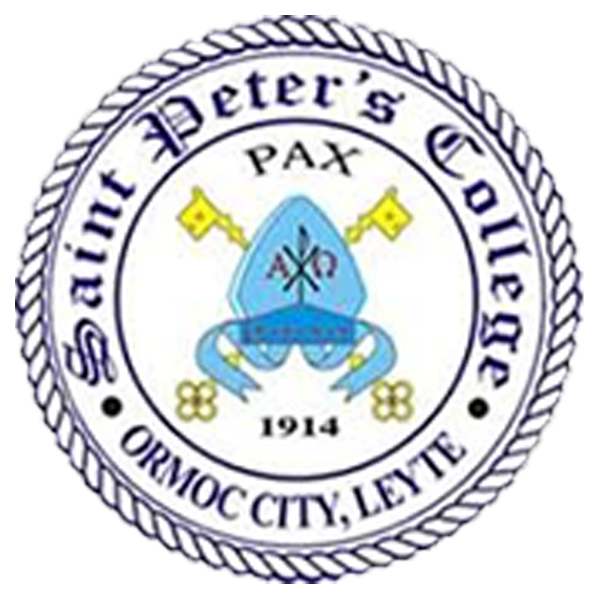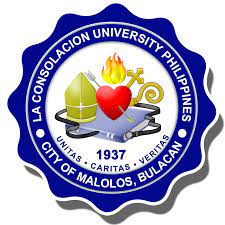Commitment to Quality and Mission: An Imperative for our Schools’ Survival and Growth
- December 2, 2020
It is still my great privilege to welcome you to the 2019 General Assembly of the PAASCU.
Even in the run-up to this happy day, the registrations were coming in faster and in greater numbers than in previous years. Today some 500 of you have assembled here. Your record-breaking number is not just because we are in a new venue. Nor just because you wanted to meet your old friends in PAASCU.
You are here, I surmise, also because you have noticed fresh energy and renaissance activity in PAASCU: the accreditors list has been updated and competent accreditors have been re-invited to serve in PAASCU anew; nine training sessions have outputted 285 new accreditors now among our total of 997 accreditors; two trainings have re-tooled 64 staff chairpersons; new guidelines have been approved for the Commissions; a new instrument has been approved for Senior High School, revisions have been approved for the instruments of Basic Medical Education, Tourism Hotel and Restaurant Management, the Education Programs, and the Supplement Instrument to Liberal Arts, Business and Education Programs; there is ongoing work on the revision of the instruments of Basic Education, Secondary Education, Elementary Education, Information Technology, Engineering, and Graduate Education, as well as work on a new instrument for Institutional Accreditation; a new protocol on the evaluation and approval of survey team’s reports has been approved; we now have 352 member schools, 297 of which are spread throughout the country and 5 of which are in other countries; we accredited 446 programs in 185 institutions.
Thank you for being part of this!
Considering the theme of our General Assembly, I hope you are also here because of your own personal commitment to quality and mission.
You are here, I hope, because you too believe that the commitment to quality and mission is an imperative for our schools’ survival and growth. It is also imperative for Philippine education as a whole. Private Education in Crisis We know: Private education in the Philippines is in crisis.
Public policy is hurting our private schools; in time, it can destroy them. Higher salaries in government – doubling if not trebling – what most of our schools can pay – draw our teachers and administrators to public schools. Teachers, carefully trained and nurtured in our schools are sucked into the public system as soon as they earn their license to teach. Older teachers facing imperatives to provide adequately for their children reluctantly choose higher income over the school community that they love and cherish.
Meanwhile, free education not only in basic education as provided by the Constitution but also in tertiary education as provided by the Universal Access to Quality Tertiary Education Act (RA 10933) draws students away from our schools. Programs painstakingly built up by private universities are now closed because the nearby State Universities are offering the same programs for free.
ADVERTISEMENT REPORT THIS AD In other organizations, we are attempting to respond to this crisis. CEAP is championing an aggressive salary standardization proposal entitled the “Teachers’ Salary Act of 2019” supported by COCOPEA.
Teachers, whether they labor in public or private schools, teach the same Filipino learners and students. When these become productive citizens sensitive to humanity and have mastered competencies that make them contributors to society, they serve the same one Filipino nation, and benefit the same one Filipino economy. So why shouldn’t they all be compensated equally and benefit equally from educational funds that taxpayers – including teachers in our schools – contribute to? The proposed salary standardization law says that where government pushes public-school salaries above the market rate using taxpayers’ money by legislation, legislation should use taxpayers’ money to provide equivalent salaries in the private sector. If public and private schools serve the same poor students and the same economy that provides public funds, why shouldn’t legislation ensure that all the teachers be paid equally? Hopefully as educators of the one Philippine system of education, you can all support this proposed legislation. Hopefully, you can also publicly insist that the in the implementation of the Universal Access to Quality Tertiary Education Act (RA 10933) those who choose to be educated in the private school system with good reason, e.g., because the quality of education in a specific private school is markedly better than in an available or proximate public school or, e.g., simply because in a private school they can be instructed and formed in the religion of their conscience, be supported in their educational dreams as much as students who opt to go to public schools and are fortunate enough to be accepted. Reaching deep into the educator’s soul However, even as you support laudable efforts to improve the systemic complementarity between public and private schools as the Constitution envisions especially in areas of public spending and support, we come together today to renew our commitment to education in the Philippines ultimately because of what may be referred to as our interiorly-perceived mission to education.
That is something which is more substantial than the benefits our schools may receive from this or that public program, and far more compelling than the salary which I receive or the benefits I enjoy in teaching; it is more compelling than the passing assignment my religious superior has given me, or the prestige I enjoy in fulfilling my administrative functions.
Our commitment to the educational mission reaches deep into the educator’s soul where the desire to serve another person’s learning originates. I have referred to this educator’s soul in past addresses.
Deep within I am called to be a teacher; deep within, I am me in my desire to help another person learn by sharing of my own learning, by teaching, counseling, coaching, inspiring and leading.
Deep within, I am missioned in freedom to call forth the freedom of another person in learning, to awaken him or her to accept the challenges of being humanely human in consciousness, wisdom and life. I am missioned not only to instruct in knowledge, but to form in freedom, so as to build persons who are professionally competent, but also morally mature and so personally and socially transformative.
We have come together today to renew ourselves in this commitment to mission. It is a mission which many of us trace back to our Creator, missioning us to teach especially ultimate truths to all nations, to spread the Gospel of the fullness of human life that Jesus Christ comes to bring.
But whether Christian or Muslim, theist or atheist, Filipino or Chinese, it is a mission which all of us trace back to the core of our educator’s soul which motivates us to establish our private schools, to work on instructing and continually improving our instruction until deep within we are satisfied our learners and students have learned as we want them to learn; it motivates us to keep our schools alive and make them thrive institutionally even when the government that should help us harms us, and when the educational environment that should support us hurts us.
We return to the vocation to educate that in our national history moved us to establish schools and universities in the Philippines long, long before the public school system was established and long, long before taxpayers’ money was used to educate, initially with modesty and frugality, today with less modesty and often hazardously.
Renewed Commitment to Mission and Quality With this commitment to mission, we renew ourselves in our commitment to quality. Many educators in the Philippines and in the world still debate the meaning of quality. In PAASCU, our understanding of quality is explicit in our mission statement: “to promote our member institutions’ implementation of their vision, mission and goals, achievement of minimum standards and evidenced excellence based on learning outcomes, and responsiveness to stakeholders.
”This too is an exigency of our educator’s soul. If we build schools, they must do what they are intended to do, serve the populations they are intended to serve, provide the mission framework within which instruction, research and service are to be undertaken and succeed.
They must meet minimum academic standards set by government, but beyond minimum standards they must promote and achieve standards of excellence in a manner that distinguishes the school through academic freedom, innovativeness and creativity.
Finally they must address the concerns and needs of stakeholders who are to benefit from a wide array of quality schools.
Against the adverse conditions to private education in the Philippine landscape today, private schools must dedicate themselves to educational quality with all the more energy and generosity called forth from within by the educator’s soul, if not from within by God’s will.
Administrators must continue to find ways to survive or thrive in the Philippines; teachers must discover satisfaction in mission and joy in sacrifice. Ultimately, it is clear: education is a service. It is a service bigger than ourselves.
Service implies sacrifice. With the commitment to quality is the commitment to quality assurance.
If I say my school is world-class, I must be able to assure myself and others that what I say is true.
If I say my school will be the school of choice for science and technology in the region, I must be able to assure myself and others that my statements about the quality of my school are true. The most exacting form of quality assurance is accreditation.
In our Vision statement, we declare: “PAASCU will be the leading, independent, professional association in the Philippines and beyond that fosters quality education through voluntary accreditation.
It will be the leading advocate for quality assurance in ASEAN.” This means that for quality assurance as we practice it and as we promote it we will be guided by the ASEAN Quality Assurance Framework.
This framework, which must accompany and guide all of us, uses four quadrants based on four “principle statements”.
The principle statements describe generally, in detail, and through examples the External Quality Assurance Agency (EQAA), the External Quality Assurance Standards and Procedures (EQA-SP), Internal Quality Assurance (IQA) and the National Qualifications Framework (NQnF).
Looking at these four quadrants, PAASCU, which is an EQAA, and all of us must appreciate that the soul of quality assurance, its driving force, and key motivator, is Quadrant 3, IQA, where, it is clearly stated, “A fundamental principle of quality assurance in higher education is that quality assurance primarily rests with the higher education institutions themselves.” Ultimately it rests in the educator’s soul and the educator’s autonomous driving commitment to quality education.
In this driving commitment to quality education, however, we come together today not only as independent schools and HEIs interested in or demanding from an external quality assurance association (EQAA) the cold external check on performance, the seal of good housekeeping that conduits benefits from government for our schools, or even mercy from an organization too often mistakenly regarded as a regulator.
PAASCU is an EQAA, but not so external as to be disassociated from you. It is you who is, from your educator’s soul, call forth PAASCU freely, voluntarily, of your own free will, in your own academic freedom, to partner with you in your need for quality assurance; you keep it alive. PAASCU is nothing without you. For this reason, you take responsibility for it.
That is why you work so hard for it. That is why you sacrifice so much for it. You own it as yours. That is why as it experiences today’s great renewal you come together today to affirm it. And in your commitment to mission and quality. to wish it well. It is a dark age for private education. And for many of our schools. But together we are convinced: only in credibly demonstrating that our schools are quality schools can we overcome this darkness. Only in getting in touch again with our educator’s soul that desires to educate towards wisdom and form towards a just and humane society can we find the light to dispel the darkness. We will be light in darkness: our schools of quality will distinguish themselves in the educational landscape, transcend minimum standards in academic excellence, and serve the stakeholders they serve well.
They themselves will drive for this assured quality; something government cannot force on them; something even PAASCU cannot force on them. In their drive for quality, however, PAASCU will assure them and others that according to standards and procedures that are internationally respectable they are achieving what they intend to achieve.
It is in this shared light that they will find the inspiration and courage to oppose and overcome inimical government policy, and continue to provide society with educated people who know the difference between true and false, right and wrong, private benefit and the common good and have the professional expertise to make a difference.
Their satisfaction will not come from the size of their government benefits; it will come from their fidelity to their educator’s soul. And from the quality of their graduates.
Quality Seriously Neglected To find our way in the darkness, we must shine in our quality. But we are not alone. We belong to a country where the State is mandated “to protect and promote the right of all citizens to quality education at all levels” (Art XIV. Sec 1) and make it accessible to all. The State is mandated to “establish, maintain and support a complete, adequate and integrated system of education relevant to the needs of the people and society” (Art XIV. Sec 2).
The State should be the main guarantor of quality education in the Philippines. But today, within this one integrated system of education we must complain that the State is failing to fulfill this solemn mandate.
The citizens have a right to this quality education on all levels. But the quality ecosystem is dysfunctional. Where the State fails to address this, or we fail to improve it, it wastes precious educational resources and jeopardizes the futures of many Filipino students and the future of Philippine society.
Let me give four examples that warrant our complaint. First, the K-12 reform. The reform was not just to respond to the demand of educators in other countries that we have 12 years of basic education and not just 10.
We heeded the demand. We decided it would be good to decongest our basic education program in order to allow our learners time to master disciplines in basic education like reading, writing, mathematics, the natural and social sciences, including Philippine history.
But when we expanded ten into twelve years and even preceded this with Kindergarten, what had been decongested was then re-congested with subjects from the colleges dropped into senior high school.
Then what was originally a two-track system, one pre-work, the other pre-college, became a one-track system, compelling those who had no intention nor capability of doing serious college work to take pre-college subjects and compromising the skills instruction among pre-work students so that by graduation they were not ready for serious engagement in the work mainstream. Many of us have suspected that much has gone awry with the K-12 reform.
Many of us have complained about the legislated requirement of the spiral system, and know-how hassled students and teachers are in senior high school. Yet even as teachers in government are demanding yet another round of salary increases that will further harm our private schools, nobody seems to care about the quality of the learning outcomes produced in senior high school.
For the one Philippine system of education sensitive to the right of all students to quality education on all levels, who is checking the quality of the SHS learning outcomes objectively? In meetings with legislators and most recently in the huge CEAP national convention we have complained that the oversight committee for the implementation of the Enhanced Basic Education Act (RA 10533) has not been convened.
Some four months ago the Senator Win Gatchalian declared he would convene this; to date, this has not happened.
Meanwhile, the legislators are thinking of paying the teachers more, but this would be increased compensation for teachers with no warrant in increased assured production or increased assured quality. Even as private school teachers are compensated only with what their schools can translate into salaries from the levels of tuition their students can afford! From the viewpoint of the colleges, who are paying attention to the effect of the CHED determination that college enrollees who have not passed STEM can enroll in courses like engineering, chemistry, physics, and mathematics? Who cares about the ramification of such policies on the quality of teaching in college? Second, the Universal Access to Quality Tertiary Education Act (RA 10933).
Whereas it is avowed that good money must not be wasted on poor quality education, SUCs and LCUs are free for college students at taxpayers’ expense without the benefit of objective quality assurance processes.
In speaking with the late President Ric Rotoras of the PASUC I was made to understand that because the release of operating funds for SUCs depends on accreditation, and accreditation is done by accreditors from the public schools, accreditation is awarded in mutual solidarity and support.
Under the AQAF, this would mean that the EQAA is not truly external and the standards and procedures for accreditation are flawed. But if this is the case, how many good quality private schools are deprived of enrolment and good students deprived of better quality education because of the lack of attention to quality in public schools? Third, CHED Memorandum Order 46 s. 2012 or “The Policy Standard to Enhance Quality Assurance (QA) in the Philippine Higher Education through an Outcomes-Based and Typology-Based QA” is still very contentious. Rather than unite the HEIs in a shared culture of quality assurance, CMO 46 s. 2012 is divisive. In its definition of quality, it includes standards of excellence and fitness for purpose.
But it says nothing about minimum standards and responsiveness to stakeholders. Not appreciating minimum standards vs standards of excellence confuses the regulatory role of CHED with its developmental role. A school must achieve mandatory minimum standards, but targets standards of excellence in academic freedom.
The former must be enforced, the latter invited. Then, while the meaning of outcomes-based education is clear – education that focuses on learning outcomes – outcomes-based quality assurance is at least confusing, for assurance of outcomes must be based on inputs.
Finally, typology-based QA focused the school either on trying to determine its horizontal type (university, college or professional institute) or on achieving the benefits of its vertical type (as autonomous, regulated or deregulated).
In the former, records show that only 98 out of 2,176 HEIs in the Philippine applied for horizontal classification under CMO 46 s. 2012.
In all this contentiousness, confusion and effort nevertheless to implement an outcomes-based and typology-based CMO 46 s. 2012, what appears to have been neglected was the culture of quality assurance itself and how non-accredited schools can work their way through an appropriated culture of quality assurance to accreditation.
Part of the scandal of education in the Philippines is the relatively low number of accredited schools. Yet, how are schools to reach the stringent levels of accreditation if they have not first been introduced to and exercised in more basic quality assurance practices?
Embracing quality assurance is not something public policy can force; it is the demand of the educator’s soul.
Fourth, different accrediting association like PAASCU and PACUCOA and ACSCU-AAI for different educational levels such as basic and higher education, and different associations of accrediting agencies, like the Federation of Accrediting Associations of the Philippines (FAAP) for private schools, the Accrediting Agency for Chartered Colleges and Universities in the Philippines (AACCUP) for SUCS, and the Association of Local Colleges and Universities Commission on Accreditation (ALCUCOA) for LCUs, have different standards and procedures of accreditation, especially when determining levels of accreditation.
The situation of siloed accreditation processes for different HEI groups and the lack of harmonization between them throws in doubt the validity of the accreditation process itself and the veracity of the quality assured.
It makes it impossible to compare the assured quality of private, state and local colleges and universities, even though we are claiming comparability with the qualifications of other ASEAN nations through the ASEAN Qualifications Referencing Framework (AQRF).
This is a sorry situation that must be faced not only by the government but by the educational community of the Philippines. It is an exigency of the educator’s soul. As long as it is not faced: in fully funding only SUCs and LCUs for free tuition, there is no reliable quality assurance mechanism available to ascertain that the funds would have been better spent in private schools.
In making education accessible to all through the complementarity of public and private education, there is no way to decide how taxpayers’ money is best invested based on quality. Missionaries of Quality This address has gone long enough to tax your educator’s soul.
But in the light of these four situations allow me to end with four simple suggestions: First, we must recommit ourselves to quality, no matter how much this is neglected by the government. We must teach and teach well, and run schools of quality, even if they deviate from regulatory norms and practices which ignore quality. Second, in collaboration with CHED, we must revise CMO 46 s. 2012 into a policy that promotes and nourishes the culture of quality assurance prior to horizontal and vertical typology.
Third, we must harmonize standards of accreditation between different associations of accreditation agencies based on the ASEAN Quality Assurance Framework through dialogue with the different accreditation agencies and with CHED.
This year, PAASCU chairs the FAAP; we will work on this. Fourth, let us be inspired anew by the PAASCU vision: “PAASCU will be the leading, independent, professional association in the Philippines and beyond that fosters quality education through voluntary accreditation.
It will be a leading advocate for quality assurance in the ASEAN.” We have already brought the light of accreditation to nations beyond the Philippines.
But considering the darkness in our educational landscape, we must promote accreditation, and more urgently, the culture of quality assurance, and even more fundamentally, the respect for quality against the darkness here. Considering more than 2000 schools under the care of the COCOPEA, FAAP states that only 727 or roughly one-third are accredited. PAASCU has accredited 415 (57%) of these, or roughly 20% of private schools.[1] But for the ecology of quality assurance that we need in Philippine education, this is far too low.
We need to respond to this by going beyond our accredited schools to bring the challenge of quality assurance to other schools, beginning with the schools closest to us that do not yet practice quality assurance.
From our PAASCU vision, we are called to be missionaries of quality and quality assurance in our own country.
All this as a consequence of our ongoing commitment to quality and mission! All this as an imperative of our educator’s soul! [1] According to FAAP, out of 727 accredited schools today. ACSC-AAI has accredited 92 (13%), PAASCU 415 (57%), and PACUCOA 220 (30%). However, the real number of schools with accreditation is only 665, since 62 of these have some programs accredited by PAASCU and others accredited by PACUCOA and so are counted twice. 665 of 2000 schools is roughly one third, as stated above.





